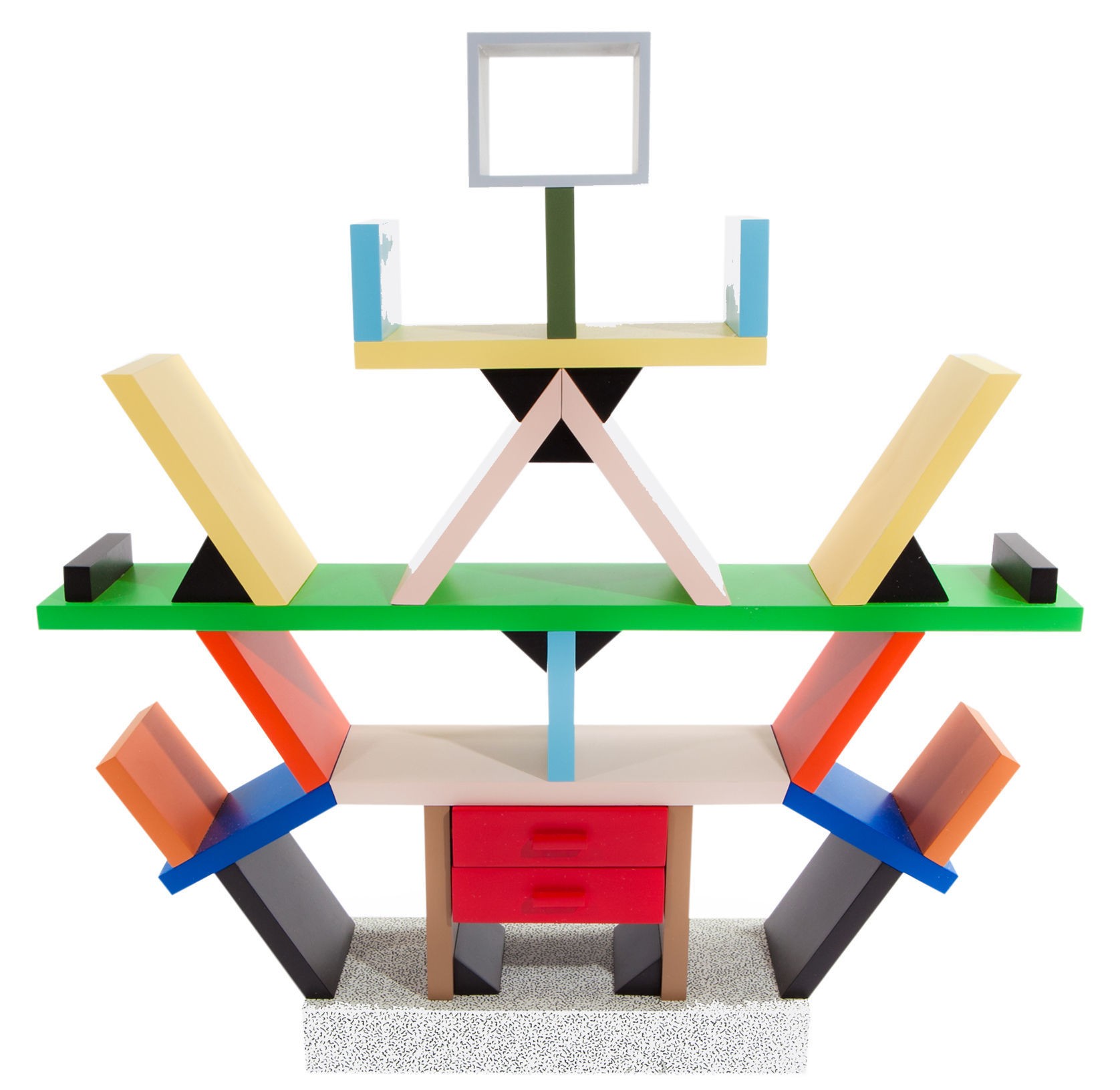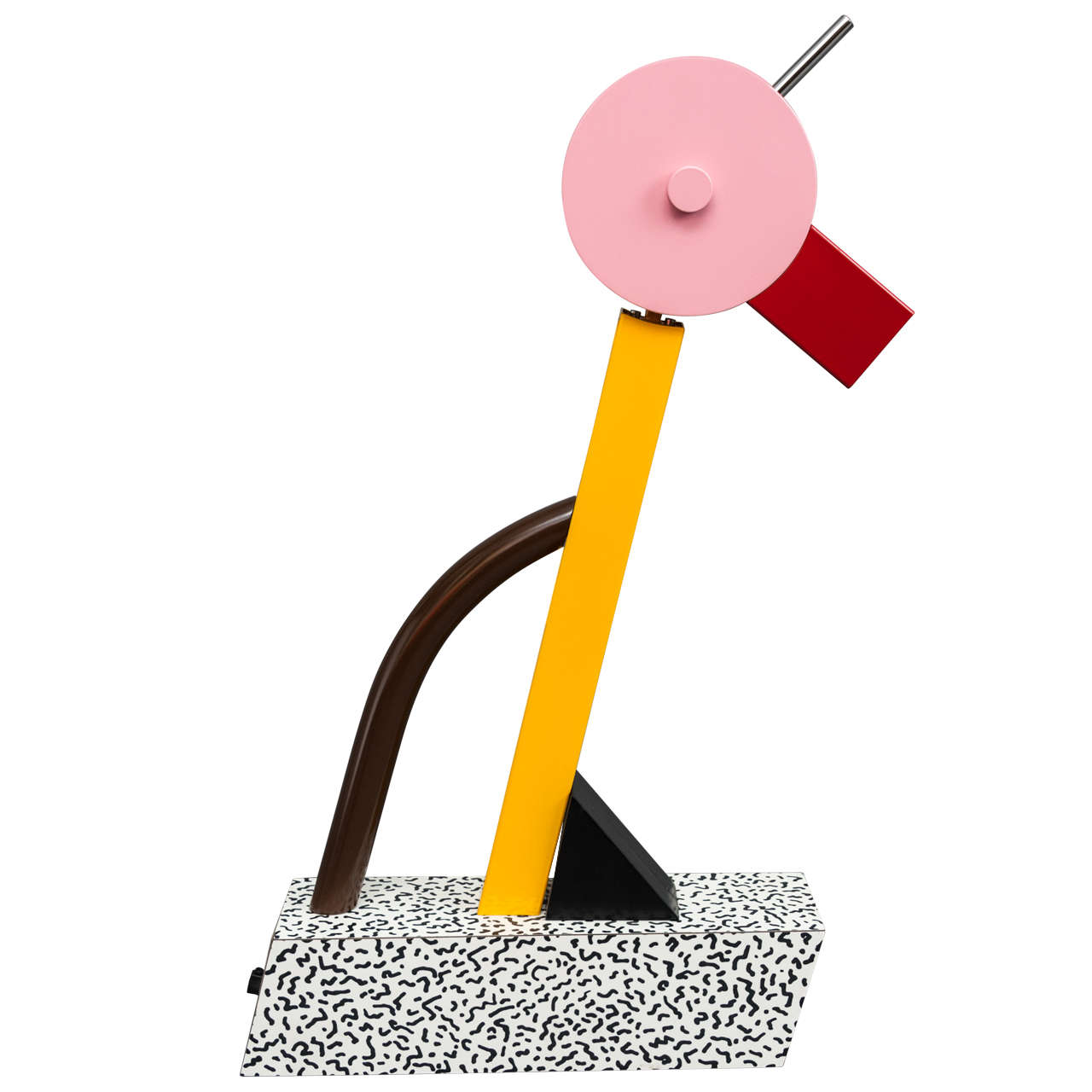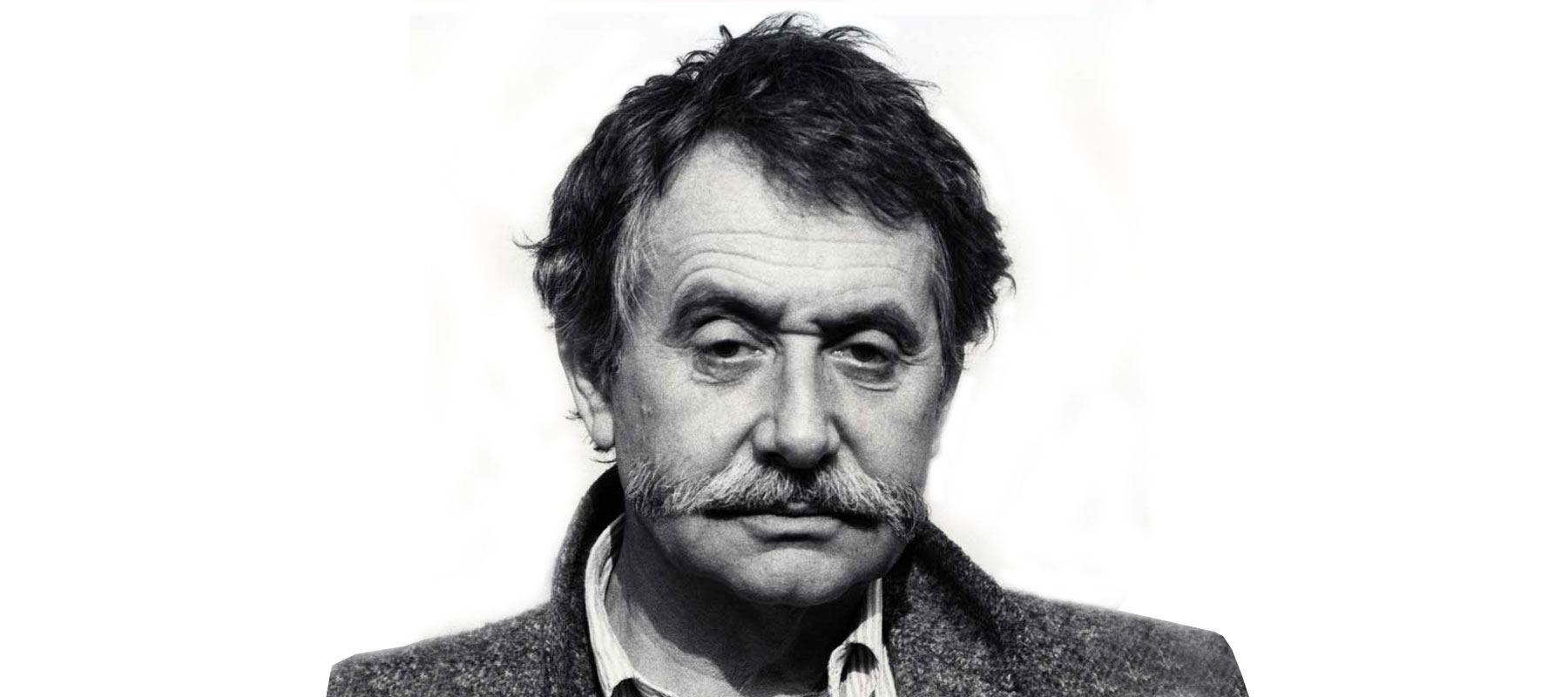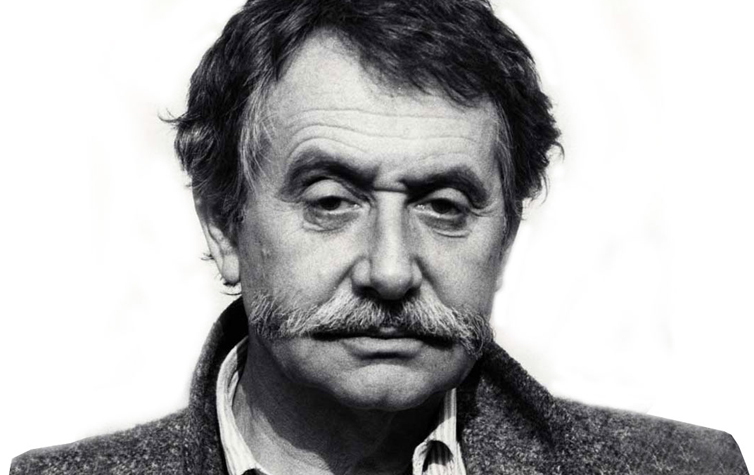
Ettore Sottsass was born in Austria, but grew up in Italy with his father, Ettore Sottsass Sr., who was an architect involved with the rationalist movement of the time. Ettore Jr. followed his father’s path and attended architecture school in Milan. He primarily studied functionalism.

Anti-Design
After finishing his education, Sottsass came to New York for a brief stint, working in George Nelson’s office. Returning to Italy to start a career of his own, he was hired by Olivetti In 1956. Here he designed office equipment, typewriters, and furniture. During the 1960s and 70s, Sottsass began to shed his functionalist roots in favor of the Anti-Design movement, which was an artistic rebellion against the perceived greed and perfectionist nature of Modernist designers. Using irony, like unexpected colors and distorted scale, Anti-Design sought to create a sense of dissonance in the observer, leading to more critical thought.
While at Olivetti, Sottsass’ work brought attention from the masses to the normally mundane design of office equipment. The Olivetti Valentine typewriter Sottsass created in 1969 is perhaps his best-known design. Its fire engine red color is a bold testament of Sottsass’s resistance to the ordinary.
Memphis
Although the Anti-Art movement officially died out in 1980, Sottsass upheld its ideology when he founded Memphis, an artist collective involving Michele De Lucchi, Andrea Branzi, Michael Graves along with Sottsass at the head. Functional objects were transformed into humorous spectacle, with florescent hues and inexplicable purpose.

In addition to equipment, Sottsass also designed furniture, carpet and jewelry. His architectural designs include Milan Malpensa Airport, a luxury yacht interior and a house David M. Kelley in Silicon Valley, as well as collaborations with the likes of Aldo Cibic, James Irvine and Matteo Thun.
Ettore Sottsass’ flamboyant work is still admired today in exhibitions across the globe. Just before passing away in December of 2007, the artist said of a newly opened retrospective of his work in Italy: “I would like the visitors to leave crying. That is, with emotion.”













